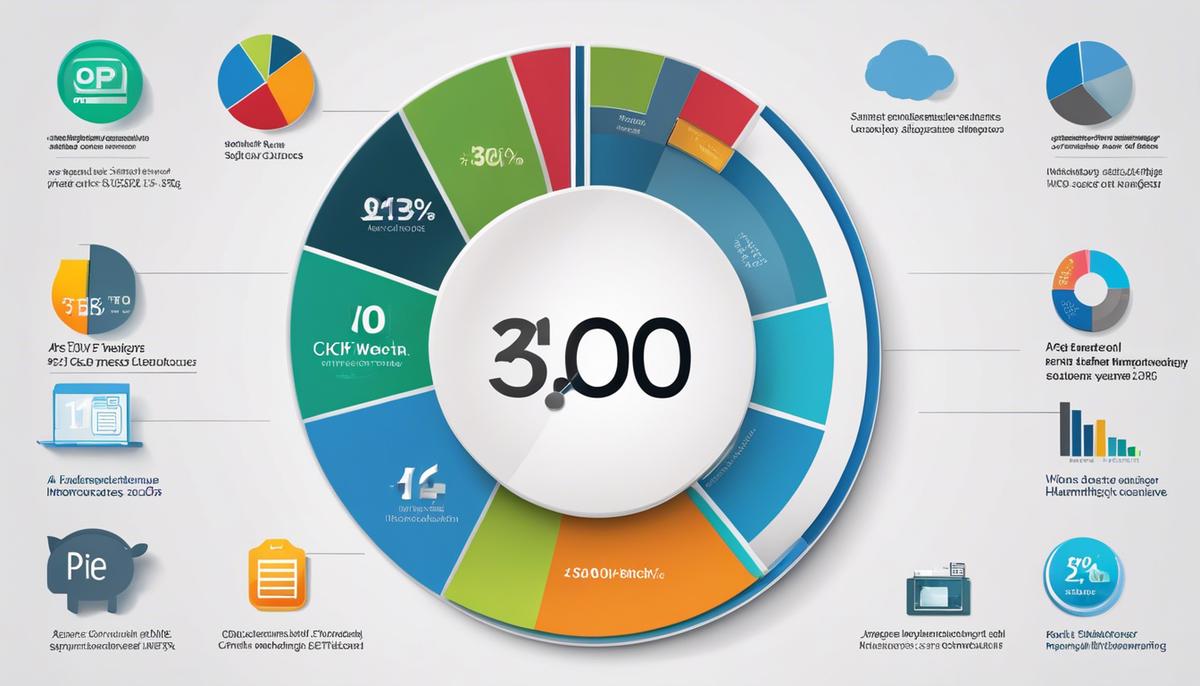A Comprehensive Guide to Dividend Stock Analysis.
Have you ever dreamed of making money with almost no effort? Well, dividend stocks might be the answer you’ve been looking for. By investing in companies that pay out dividends, you’re basically allowing your money to work hard so you don’t have to. This article is going to explore why these types of stocks are a smart choice and how they can fit into your financial strategy. Ready to learn more about dividend stock analysis ? Let’s get started.
Understanding Dividend Stocks
Unlocking the Power of Dividend Stocks: Your Path to Earning While You Sleep
Ever heard the phrase “make your money work for you“? Well, that’s not just a catchy saying; it’s a real strategy, especially when it comes to dividend stocks. If you’re eyeing a side hustle that requires minimal effort but offers a steady return, dividend stocks might just be your golden ticket. Let’s dive deep into what dividend stocks are and why they should definitely be on your radar.
First off, dividend stocks are shares in companies that pay you just for owning them. Imagine owning a slice of a big pie. Every now and then, the company decides to share a portion of their earnings with you, the shareholder, as a thank you for your investment. This “thank you” comes in the form of dividends – regular payments made out of the company’s profits.
Why are dividend stocks such a big deal, you ask? Here’s the scoop:
- Passive Income Galore: The most tantalizing aspect of dividend stocks is their ability to generate passive income. You’re literally earning money while binge-watching your favorite series, hitting the gym, or even snoozing. If you’ve got a bunch of these stocks, the dividends can add up to a hefty sum, creating a nice little income stream alongside your main hustle.
- Reinvestment Magic: Here’s where it gets even more exciting. You can take those dividends and buy more shares of the company, compounding your investment. This means your stock holdings—and subsequent dividend payments—can grow over time without you adding a penny more from your pocket. It’s like a snowball rolling down a hill, getting bigger and bigger.
- A Safety Net: Dividend stocks are often seen as a stable investment. Companies that regularly pay dividends are usually well-established and financially healthy. This stability can be a comforting factor, especially when the market gets as unpredictable as deciding what to watch on Netflix.
- Inflation Fighter: As prices rise (thanks, inflation), so can dividends. Many companies increase their dividend payouts over time, helping you maintain, or even increase, your purchasing power as the years roll on.
- Tax Benefits: Depending on your tax situation and where you live, dividends can be taxed at a lower rate compared to regular income. It’s like finding an extra fry at the bottom of the bag – a small but delightful benefit!
So, who should dive into the world of dividend stocks? Whether you’re a college kid trying to start your financial journey on the right foot, a busy parent looking to secure a more comfortable future, or simply someone eager to optimize their earnings without the hustle and bustle of a second job, dividend stocks might just be your perfect match.
Imagine building a portfolio that not only appreciates in value but also pays you regularly, allowing you to achieve your financial goals, whether that’s paying off debt, saving for a dream vacation, or even building a nest egg for retirement. The beauty of it is, you’re not trading your time for money; your money is out there, hustling on your behalf.
Getting started with dividend stocks is as simple as picking up your favorite snack from the store: do your research, select companies with a strong history of paying dividends, and consider leveraging a broker or an investment app to make your purchases. And remember, the sooner you start, the more your potential income grows over time.
So, why care about dividend stocks? Because they offer an exciting blend of passive income, financial stability, and growth potential. It’s like having a loyal friend who not only supports you through thick and thin but also treats you to coffee now and then. If you’re looking to make smart, long-term investments that pay off, dividend stocks shouldn’t just be an option; they should be a top contender. Start small, think big, and watch as your financial landscape transforms with the incredible power of dividends.
Dividend Stock Analysis
Alright, diving deeper into the world of dividend stocks, let’s talk about how to sift through the noise and pick the winners that can fatten your wallet. Picking winning dividend stocks isn’t just about spotting a high dividend yield and calling it a day. It’s like finding a needle in a haystack, but don’t worry, I’ve got the magnet.
First up, let’s talk about the company’s dividend history. Companies that have consistently paid out dividends are like the reliable cars of the stock market – they may not always be flashy, but they get you where you need to go. Look for companies that have not only paid dividends but have a history of increasing them. This shows a commitment to shareholders and a stable financial health.
Now, onto a key ingredient – the payout ratio. This is the percentage of earnings paid out as dividends. Imagine your earnings are a pie. The payout ratio tells you how big of a slice the company gives back to its investors. You don’t want a company that gives away the whole pie (a payout ratio of 100% or more) because that leaves no room for future growth or to weather tough times. A sweet spot is typically a payout ratio under 60%. This shows that the company is generous but still has funds to reinvest in itself.
Financial health is next. Pull out your detective hat because we’re looking at the balance sheet. A company with strong fundamentals – low debt, high cash reserves, and solid profit margins – is positioned well for long-term success. These companies can not only sustain dividend payments but potentially increase them.
Sector trends cannot be ignored. Like seasons affecting fashion trends, economic cycles affect different sectors. Some sectors, like utilities, are known for being stable and providing consistent dividends. However, it’s also smart to keep an eye on growing sectors that have the potential for dividend growth.
Lastly, let’s talk about dividend yield, but with a twist. High dividend yield might catch your eye, but it’s not all about the size. A very high yield can sometimes be a red flag, as it might not be sustainable in the long run. A sudden spike in dividend yield can sometimes indicate the stock price has fallen due to underlying issues within the company. It’s like spotting a designer bag at a too-good-to-be-true discount – you have to wonder what’s wrong with it.
By keeping these factors in check – dividend history, payout ratio, company fundamentals, sector trends, and a balanced view of dividend yield – you’re well on your way to picking dividend stocks that don’t just dazzle with their promise but deliver on it. Remember, it’s about mixing the art of intuition with the science of research. So, roll up your sleeves, and let’s get those dividends rolling in!
Diversification and Risk Management
Managing risks with dividend stocks might sound like a snooze-fest, but it’s actually your secret weapon to making sure your money keeps working for you without pulling any disappearing acts. So, let’s dive into how you can play it smart with your dividend investments, making sure you’re not just throwing your cash into the wind.
Peek into the Future: Dividend Consistency and Growth
First up, let’s talk about the future. No, we don’t have a crystal ball, but looking at a company’s dividend growth and consistency can give you a pretty good idea. Companies that have a track record of consistently increasing their dividends likely have some solid plans for growth and profitability. Imagine it like betting on a friend who always shows up on time – it’s a good sign they’re reliable.
Diversification: Don’t Put All Your Eggs in One Basket
Here comes an oldie but goodie – diversification. Similar to how you wouldn’t wear flip-flops in a snowstorm, relying on a single stock or sector for dividends is a risky move. Spread your investments around different industries. That way, if one sector hits a rough patch, you’re not left out in the cold. Think of it as your investment diet – variety is the spice of life!
Interest Rates: The Economic Weather Forecast
Keep one eye on interest rates – they’re kinda like the economic weather forecast. When interest rates rise, other investments might suddenly look more appealing than dividend stocks, making them less attractive and potentially lowering their prices. It’s all about staying ahead of the game and understanding how these economic changes can affect your investments.
The DRIP Strategy: Turn Small Streams into a River
Ever heard of DRIPs? That’s Dividend Reinvestment Plans for you. They let your dividends automatically buy more shares of the stock, sort of like using your small streams of income to eventually create a river. This not only compounds your investments but also helps smooth out the risk of buying stocks at just high points. It’s making your money do the hustle for you – sneaky but effective.
Keep an Eye on Cover Stories: The Tax Tale
Taxes – nobody’s favorite topic, but you’ve gotta deal with it. Dividend stocks come with their own tax implications, so understanding how they fit into your tax strategy is key to not getting caught off guard. Some dividends qualify for lower tax rates, but this can depend on your overall income. So, keep this in mind to avoid any unpleasant tax season surprises.
The Exit Strategy: Know When to Hold ’em, Know When to Fold ’em
And lastly, having an exit strategy is crucial. Not every investment will go according to plan, and that’s okay. Knowing when to cut your losses and sell can be just as important as knowing when to buy. It’s like cleaning out your closet – sometimes, you have to let go of that shirt you loved but never wear anymore.
Alright, so there you have it – managing risks with dividend stocks doesn’t have to be as daunting as it sounds. With some smart strategies and a bit of diligence, you can make sure your investments keep paying off without taking on unnecessary risks. Just remember, the goal is to make your money work for you, not the other way around. And who knows? With the right approach, you might just find that dividend stocks are the loyal, income-generating companions you’ve been looking for in your investment journey. So, let’s get those investments working smarter, not harder!
Tax Implications of Dividend Investing
Alright, let’s dive deep into one of the most crucial considerations for anyone diving into the world of dividend stocks – the tax implications. It’s vital to understand how your dividend income will be taxed because, let’s face it, no one likes surprises, especially when it comes to money and taxes.
First off, we need to talk about the two types of dividends you might receive: qualified and non-qualified dividends. Grab a seat; this is where it gets juicy. Qualified dividends are taxed at the capital gains tax rate, which is generally lower than the regular income tax rates. This is one of those perks that make dividend investing so appealing. To qualify for this lower tax rate, you must hold the stock for a specific period – more than 60 days during the 121-day period that begins 60 days before the ex-dividend date, to be exact. If this sounds a bit complex, don’t worry. Just remember it’s about holding on to those shares for a bit to snag that tax break.
On the flip side, we have non-qualified dividends, also known as ordinary dividends, which are taxed at your regular income tax rate. Yikes, right? But, it’s not all doom and gloom. These dividends are the most common type, so many investors are in the same boat, paddling through the tax season.
But wait, there’s more to consider, such as the impact of your tax bracket. Your income level can significantly affect how much tax you’ll pay on dividends. Higher-income folks might see a larger chunk of their dividend income go to Uncle Sam, while those in lower tax brackets might get to keep a bit more in their pockets.
Now, let’s talk about something that might ease the tax burden – dividend reinvestment plans (DRIPs). Here’s the skinny: when you automatically reinvest dividends to purchase more shares, you’re essentially increasing your investment without shelling out more cash from your wallet. But remember, those reinvested dividends are still taxable income. It’s like a cycle of growing your investment while also keeping an eye on the tax implications.
For the savvy investors out there, consider the impact of holding your dividend-paying stocks in tax-advantaged accounts like Roth IRAs or traditional IRAs. Why, you ask? Because it can offer a shield from taxes or defer them, making your journey to financial growth a bit smoother.
Lastly, always consider consulting with a tax professional. The world of taxes can be a labyrinth, with twists and turns that could confuse even the most seasoned investors. A tax pro can offer guidance tailored to your unique financial situation, helping you navigate the tax seas without hitting any icebergs.
In the realm of dividend investing, understanding the tax implications is like having a map in a treasure hunt – it’s essential for finding your way to financial success. By grasping the tax rules around qualified and non-qualified dividends, considering your tax bracket, leveraging DRIPs wisely, and possibly using tax-advantaged accounts, you’re setting yourself up for a smoother investment journey. Remember, in the vast ocean of investing, a little tax knowledge goes a long way. Keep sailing smartly, investors!
With the knowledge about dividend stocks now in your arsenal, you’re equipped to make informed decisions that could greatly benefit your financial future. Remember, investing in dividend stocks is not just about watching your money grow, but understanding how this growth can contribute to achieving your financial goals. Start small, think strategically, and gradually build a portfolio that not only pays off but also aligns with your financial aspirations. It’s your money, and with dividend stocks, you have the power to make it work harder for you.







